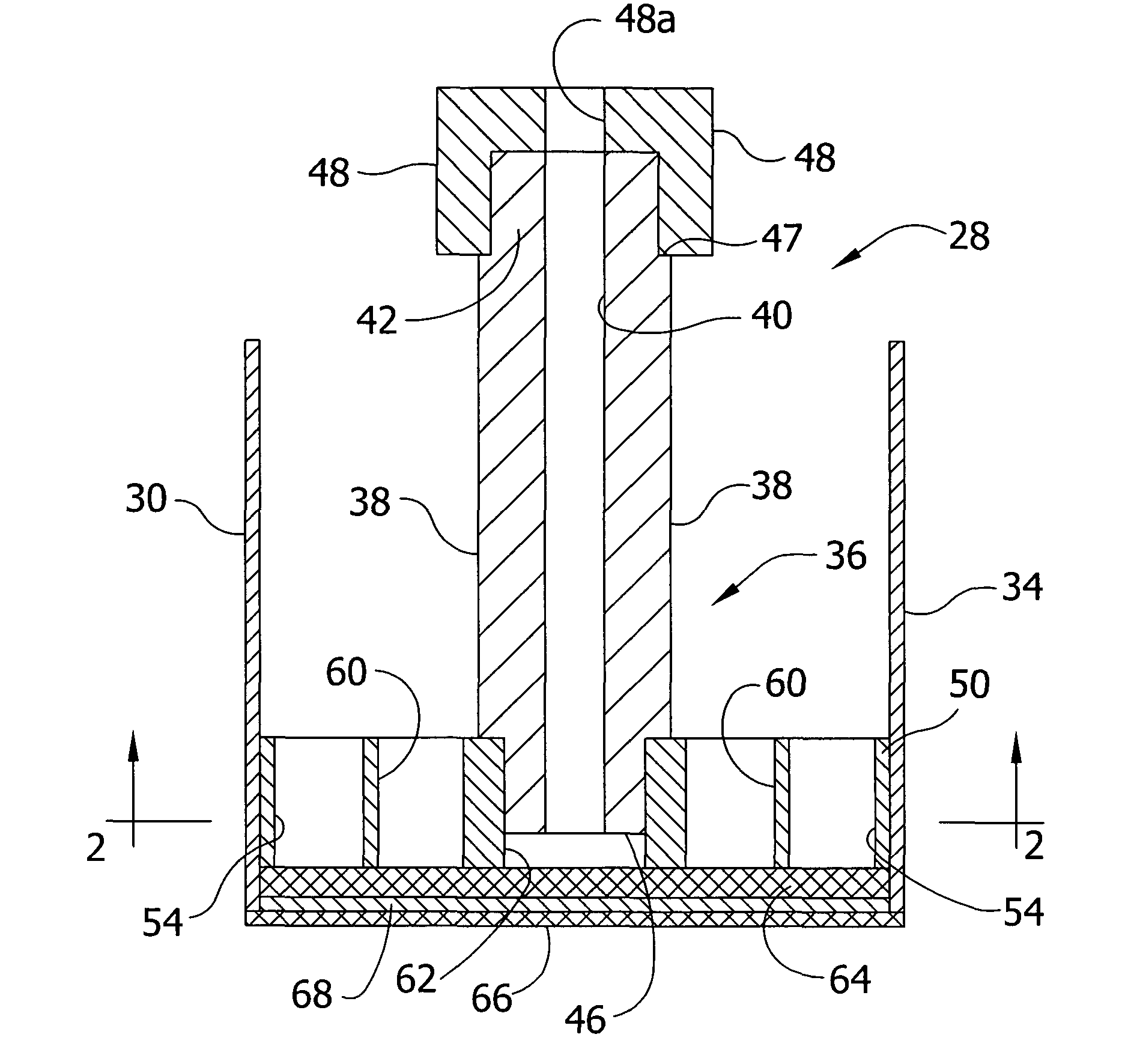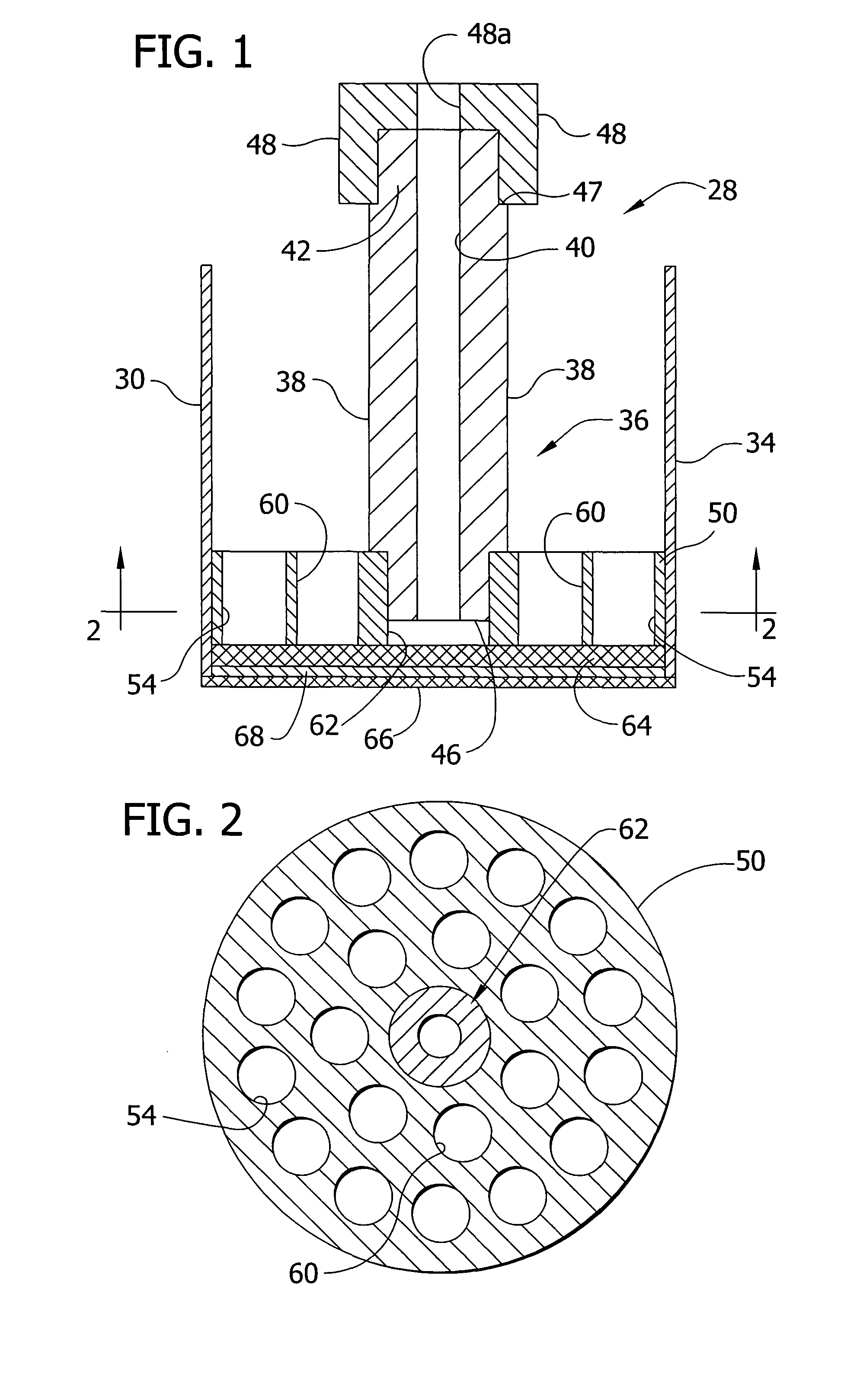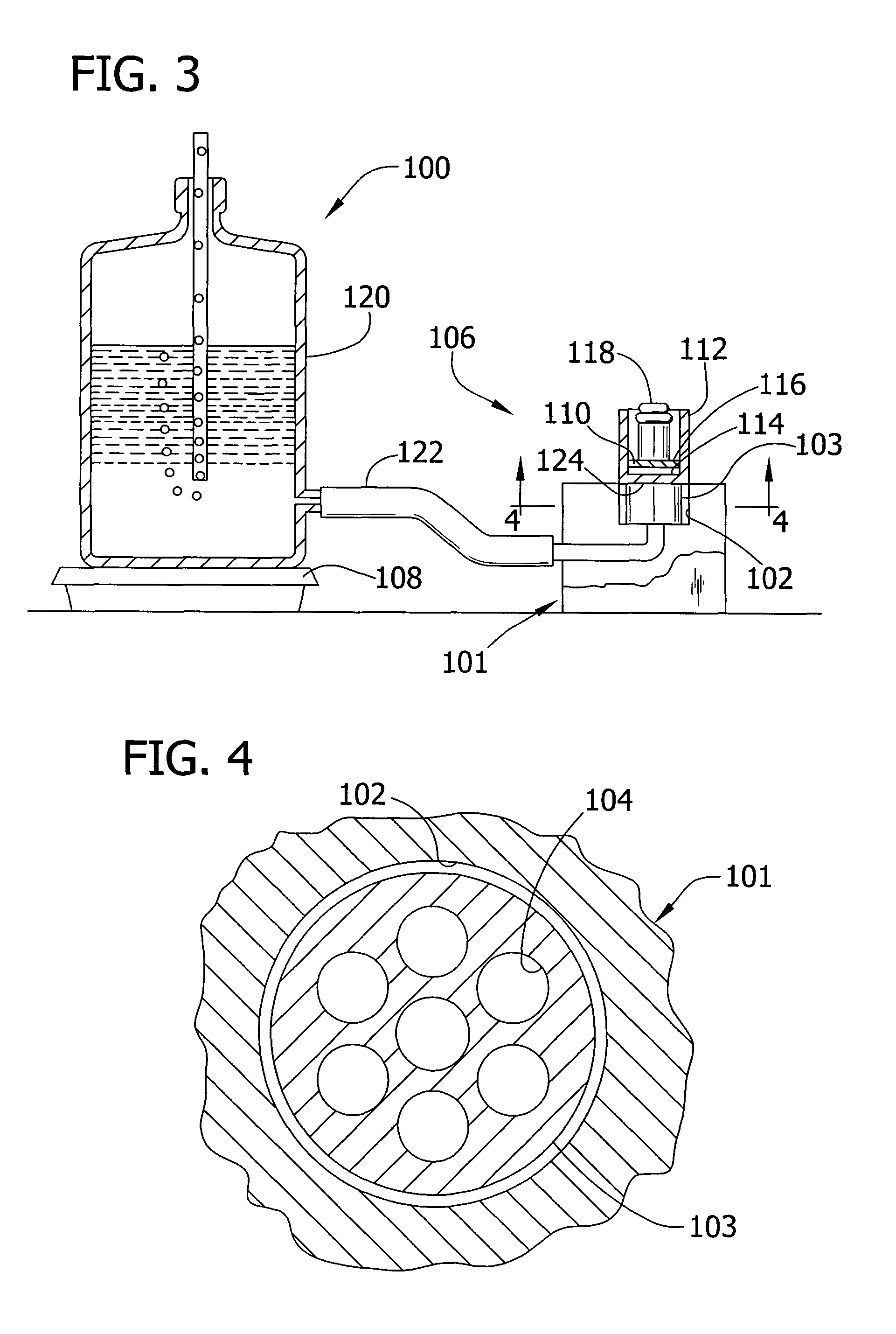Absorbent materials and absorbent articles incorporating such absorbent materials
a technology of absorbent materials and absorbent articles, applied in the field of absorbent materials, can solve the problems of insufficient structure, affecting the absorbent effect of absorbent materials, and leaking absorbent structures during use, and achieve the effect of reducing the intake rate of such absorbent structures, and reducing the leakage ra
- Summary
- Abstract
- Description
- Claims
- Application Information
AI Technical Summary
Benefits of technology
Problems solved by technology
Method used
Image
Examples
experiment 1
[0052] Three commercially available superabsorbent materials were each subjected to the Centrifuge Retention Capacity (CRC) Test, Absorbency Under Load (AUL) Test, a free swell Gel Bed Permeability (GBP) Test and a Gel Bed Permeability (GBP) Under Load Test as described later herein. Two of the tested superabsorbent materials are commercially available from Stockhausen, Inc. of Greensboro, N.C., U.S.A. as model designations Favor 880 and SXM 9543, respectively. The other tested superabsorbent material is commercially available from Dow Chemical of Midland, Mich., U.S.A. as model designation Drytech 2035. The test results are reported in Table 1 below.
TABLE 1Superabsorbent MaterialPropertySXM 9543Favor 8802035CRC (g / g)23.231.927.9AUL @ 0.9 psi (g / g)21.621.317.8Gel Stiffness Index (AUL / CRC)0.930.670.64GBP @ 0 psi load (×10−9 cm2)31633.727.0GBP @ 0.3 psi load (×10−9 cm2)1459.46.0
[0053] Notably, the gel stiffness index for each of the Favor 880 and Dow 2035 superabsorbent materials is...
experiment 2
[0060] In another experiment, the SXM 9543 superabsorbent material available from Stockhausen, Inc., without any surface treatment thereon, was subjected to the CRC Test, the AUL Test at 0.9 psi (6.2 kPa), the Free Swell GBP Test and the GBP Under Load Test described later herein. A surface treated absorbent material in accordance with the present invention was then made as follows. 1,210 grams of distilled water was poured into a one gallon Hobart® mixer, model N50 manufactured by Hobart Canada, New York, Ontario, Canada and then 54 grams of a solution available from BASF of Charlotte, N.C., under model designation CATIOFAST VFH was added to the mixer while the mixer was stirring at a relatively slow speed (setting 1).
[0061] Stirring continued for about 5 minutes or until the CATIOFAST VFH was completely dissolved. CATIOFAST VFH is an aqueous solution containing 22-24 weight percent polyvinyl amine in water. 500 grams of dry SXM 9543 superabsorbent material was added into the solu...
PUM
| Property | Measurement | Unit |
|---|---|---|
| weight percent | aaaaa | aaaaa |
| weight percent | aaaaa | aaaaa |
| weight | aaaaa | aaaaa |
Abstract
Description
Claims
Application Information
 Login to View More
Login to View More - R&D
- Intellectual Property
- Life Sciences
- Materials
- Tech Scout
- Unparalleled Data Quality
- Higher Quality Content
- 60% Fewer Hallucinations
Browse by: Latest US Patents, China's latest patents, Technical Efficacy Thesaurus, Application Domain, Technology Topic, Popular Technical Reports.
© 2025 PatSnap. All rights reserved.Legal|Privacy policy|Modern Slavery Act Transparency Statement|Sitemap|About US| Contact US: help@patsnap.com



